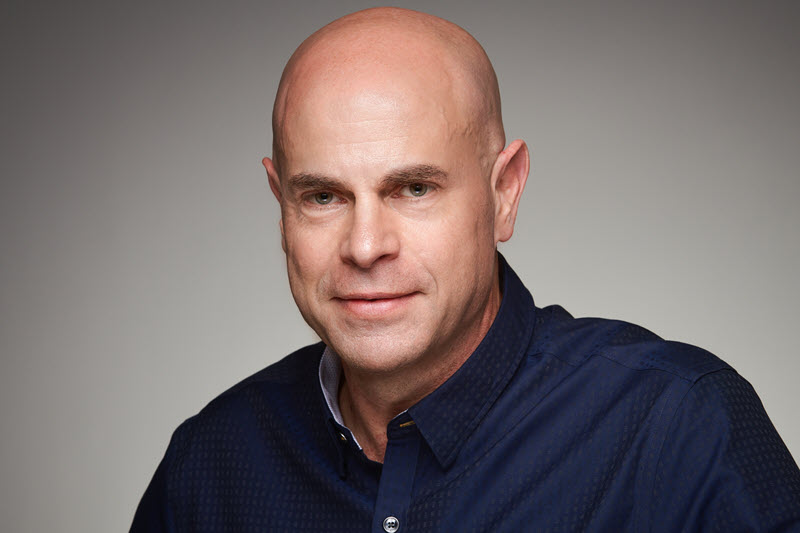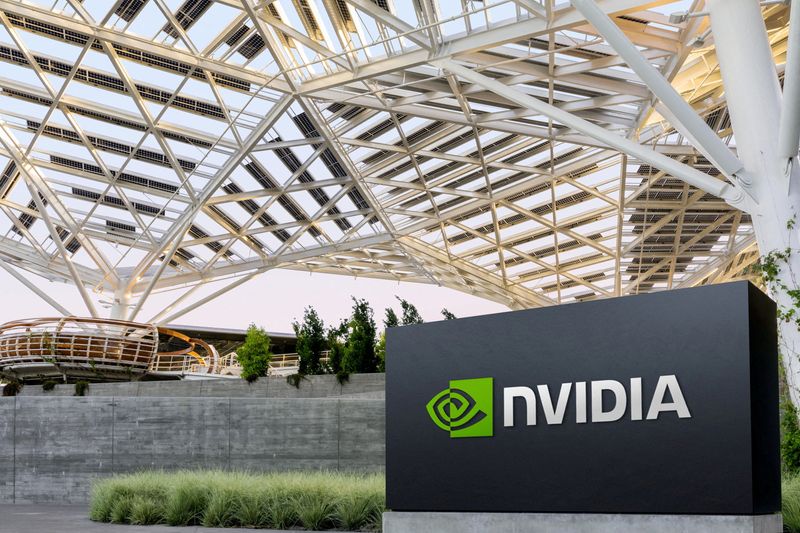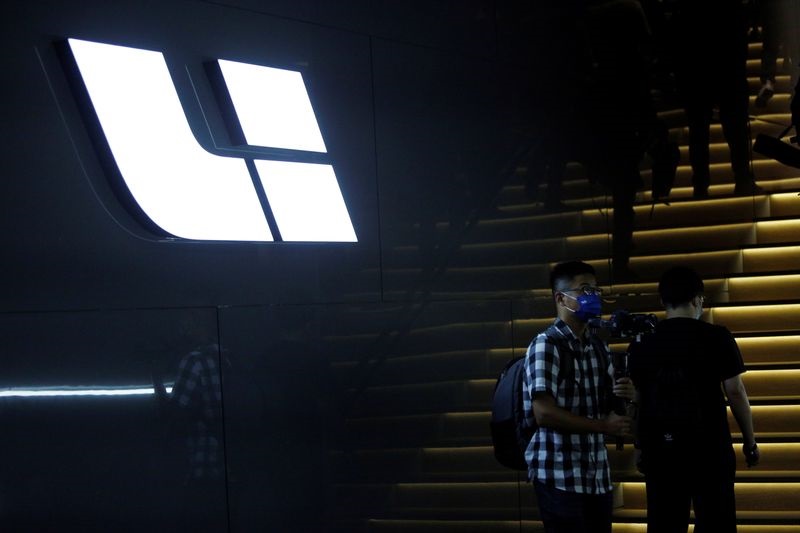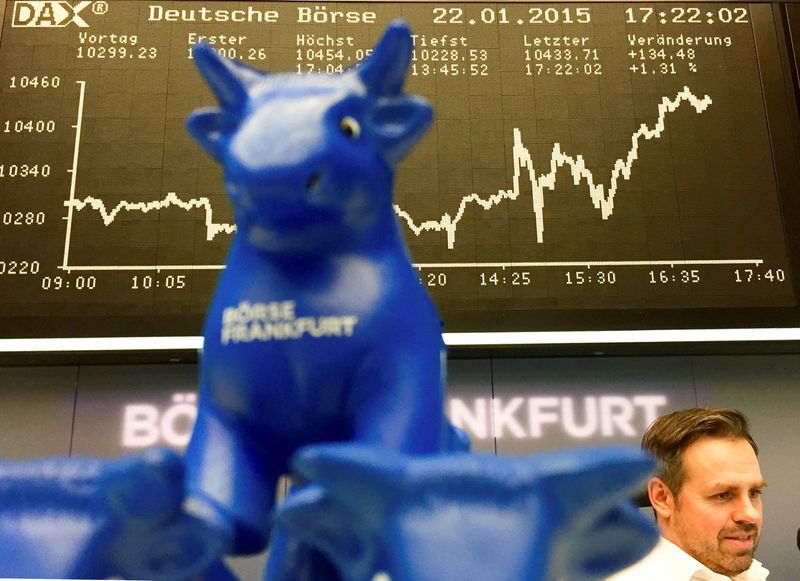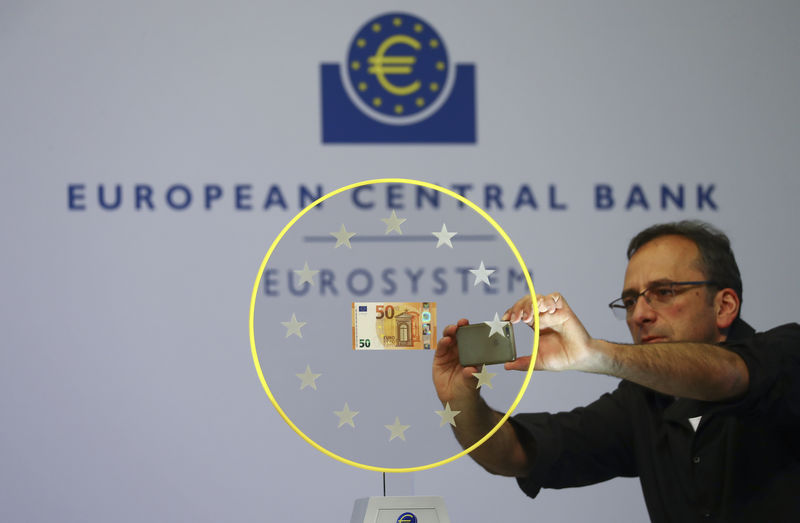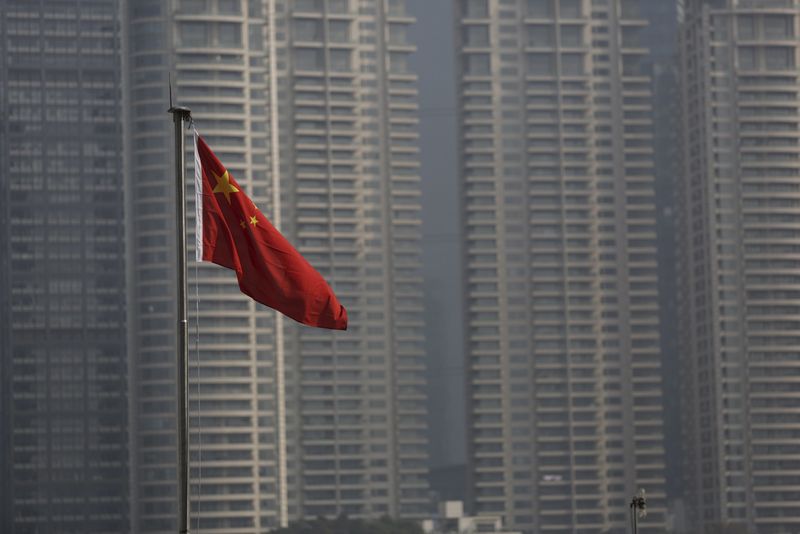ICL (NYSE: ICL), a global specialty minerals and chemicals company, reported its first-quarter earnings with sales reaching $1,735 million and adjusted EBITDA of $362 million. Despite geopolitical tensions affecting the region, the company maintained strong production levels and announced a dividend of $0.05 per share. ICL’s specialty divisions showed growth, and the company is optimistic about demand improvement in the latter half of 2024.
Key Takeaways
- ICL’s first-quarter sales amounted to $1,735 million with an adjusted EBITDA of $362 million.
- A dividend of $0.05 per share was announced, underscoring the company’s financial health.
- The company experienced challenges due to the war in Israel but managed to maintain solid production.
- The specialties-driven divisions of ICL saw growth, with the Potash division achieving record production in Spain.
- ICL’s Phosphate Solutions division reported higher volumes and stable prices, and the Growing Solutions division improved product mix and efficiency.
- Strategic acquisitions in Brazil and entry into the biologicals market were highlighted.
- The company’s innovation was recognized in a Harvard Business School case study.
- The CFO discussed stable inflation and interest rates, a decline in grain prices, and stabilization of potash and phosphate prices.
- ICL expects improving demand in the second half of 2024 and remains optimistic about the global outlook.
Company Outlook
- ICL’s new leadership is aligning strategy with market conditions and optimizing operations.
- The company is committed to innovation, creating value for shareholders.
- Executives expect global improvement in the macro environment in the second half of 2024.
- ICL is carving out the Prolactal dairy protein business from the Phosphate Solutions division.
- The company reaffirmed its 2024 guidance for adjusted EBITDA and sales volume.
remove ads
.
Bearish Highlights
- Concerns about potential erosion of phosphate pricing due to Chinese exports were addressed.
- Q2 potash prices are expected to be slightly lower than Q1.
- The long-term future of the polysulphate product is uncertain, with current operations at breakeven.
Bullish Highlights
- ICL’s battery materials expansion includes three new MOUs, pending product qualification.
- Anti-dumping rulings have been effective in increasing market prices.
- The demand for potash remains robust, with no significant changes in sales to China and India.
Misses
- The CEO discussed the future of Boulby, Cleveland Potash, acknowledging that the Woodsmith project may not be built due to insufficient demand.
- The profitability of polysulphate product is influenced by fluctuating potash prices and has been only marginally profitable in 2023.
Q&A Highlights
- ICL’s specialties-driven businesses, research, and development efforts were topics of discussion.
- The company addressed concerns about phosphate price erosion, stating the impact has been minimal so far.
- The company is exploring ways to make the polysulphate business viable and sustainable.
- The future of the Boulby project is uncertain, with a limited market opportunity in Europe and larger potential in North America.
ICL’s earnings call reflected a company navigating geopolitical and market challenges with strategic focus and operational efficiency. With a strong start to the year and a clear vision for the future, ICL continues to position itself for sustainable growth in a dynamic global market.
InvestingPro Insights
ICL’s recent earnings report demonstrates a company that is managing to navigate through market volatility with a focus on strategic growth and shareholder value. The InvestingPro data and tips provide further context to the company’s financial health and market position.
remove ads
.
InvestingPro Data:
- Market Capitalization: With an adjusted market cap of $6.2 billion, ICL showcases its significant presence in the specialty minerals and chemicals market.
- P/E Ratio: ICL’s price-to-earnings ratio stands at 9.53 for the last twelve months as of Q4 2023, indicating a potentially undervalued stock relative to earnings.
- Dividend Yield: As of the date provided, the company offers a dividend yield of 2.96%, reflecting its commitment to returning value to shareholders.
InvestingPro Tips:
1. High Shareholder Yield: ICL’s strong shareholder yield is a testament to its commitment to delivering value to its investors, a key factor for those seeking income-generating investments.
2. Valuation Implies a Strong Free Cash Flow Yield: This suggests that the company is generating sufficient cash flows relative to its share price, which can be a sign of financial stability and the potential for future investments or dividend payments.
For investors interested in a deeper dive into ICL’s financials and future outlook, there are additional InvestingPro Tips available, including insights on the company’s long-standing history of dividend payments and analysts’ profitability predictions for the year. To explore these further, visit https://www.investing.com/pro/ICL and remember to use the coupon code PRONEWS24 to get an additional 10% off a yearly or biyearly Pro and Pro+ subscription. With a total of 5 InvestingPro Tips listed for ICL, investors can gain a comprehensive understanding of the company’s financial health and market potential.
Full transcript – ICL Ltd (ICL) Q1 2024:
Operator: Ladies and gentlemen, thank you for standing by, and welcome to the ICL Analyst Conference Call. Our presentation today will be followed by a question-and-answer session. [Operator Instructions] I’d like to hand the call over to our first speaker today, Peggy Reilly Tharp, Vice President of Global Investor Relations. Please go ahead, ma’am.
remove ads
.
Peggy Reilly Tharp: Thank you. Hello, everyone. I’m Peggy Reilly Tharp, Vice President of Global Investor Relations. I’d like to welcome you and thank you for joining us today for our quarterly earnings call. The event is being webcast live on our website at icl-group.com. Earlier today, we filed our reports with the securities authorities and the stock exchanges in the U.S. and in Israel. Those reports, as well as the press release, are available on our website. There will be a replay of the webcast available after the meeting and a transcript will be available shortly thereafter. The presentation, which will be reviewed today, was also filed with the securities authorities and is available on our website. Please be sure to review the disclaimer on Slide 2. Our comments today will contain forward-looking statements within the meaning of the Private Securities Litigation Reform Act of 1995. These statements are based on management’s current expectations and are not guarantees of future performance. The company undertakes no obligation to update any financial information discussed on this call at any time. We will begin with a presentation by our CEO, Mr. Raviv Zoller, followed by Mr. Aviram Lahav, our CFO. Following the presentation, we will open the line for the Q&A session. Raviv, please.
Raviv Zoller: Thanks, Peggy, and welcome everyone. Similar to the recent quarter, I would like to provide a brief update on the situation in Israel. While there are still challenges caused by the war, we have continued to minimize disruptions to our business operations and for our employees. While various operational challenges related to the war have persisted, including higher logistics costs, we have been able to maintain good production levels, thanks in part to the return of most of our employees who had been called up for reserve duty. Despite the unique challenges, we were able to execute according to plan in the first quarter, resulting in a good start to 2024. For the first quarter, ICL delivered solid sequential improvement as global demand appears to have stabilized, as most of the multiple end-markets we serve have begun to show signs of recovery. While there are some exceptions based on locations and other factors, gradual improvement should start becoming apparent in the various channels we serve. So, as we have said in the past, we will be agile and work to effectively manage the areas under our control and react with appropriate swiftness when necessary. Now, if you will, please turn to Slide 3 for a brief overview of the first quarter. Sales of $1,735 million and adjusted EBITDA of $362 million, both showed quarter-over-quarter improvement, although down versus the prior year, as expected. For the first quarter, we delivered $0.09 of adjusted earnings per share and will distribute a dividend of about $0.05 per share. Our longstanding policy is to pay out up to 50% of adjusted net income each quarter. We continued to focus on cash flow and generate an operating cash flow of nearly $280 million in the first quarter, with free cash flow of more than $130 million. We continued to carry out efficiency efforts in the first quarter and manage through some logistics challenges. Aviram will discuss our efficiency and cost-savings initiatives in more detail later in the call, but our commitment to these efforts has not dimmed our focus on innovation. We continue to expand our specialties product portfolio, both through the launch of innovative new products and via an acquisition in the first quarter. I would ask you to turn now to Slide 4 and to look at recent trends for some key financial metrics. While first quarter sales were down as expected, they were up 3% sequentially. Adjusted EBITDA also improved on a sequential basis, while earnings per share were slightly down for the same timeframe Our consistent focus on increasing the contribution from our specialty-driven businesses resulted in a sequential improvement based on volume growth. First quarter specialties-driven sales were up 6% versus the fourth quarter of 2023, while EBITDA improved approximately 17% quarter-over-quarter. Our specialties-driven divisions also delivered quarterly sequential improvement in gross margin, a trend that began in the third quarter of 2023. Let’s start with a review of our divisions and begin with Industrial Products on Slide 5. For the first quarter of 2024, sales were $335 million with EBITDA of $72 million. As expected, sales and EBITDA have improved sequentially since the third quarter of last year. For the first quarter 2024, sales were up approximately 12% sequentially, while EBITDA was up nearly 30% on higher volumes. Overall, we were able to gain market share and maintain key customer accounts while continuing to drive contribution from cost savings and efficiency efforts. For our key end markets, demand was mixed, as softness continued in electronics and in building and construction. Flame retardant sales increased versus the prior year as higher volumes for our brominated solutions were partly offset by a decline in volumes for phosphorus-based products and lower prices overall. In early April, we received news that the EU Commission had imposed anti-dumping measures on phosphorus-based imports from China, and in late April a similar petition was filed in the U.S. Global demand for clear brine fluids, which are used by the oil and gas industry, was stable in the first quarter and ICL remained a preferred supplier for the industry. On a year-over-year basis, sales were lower due to a peak market in the beginning of 2023. Our Specialty minerals business, which targets food, pharma and other end markets, continued to perform well with sequential quarterly improvement. On Slide 6, you will see our Potash results for the first quarter of 2024, with sales of $423 million and EBITDA of $124 million. In the first quarter, we completed the annual maintenance of the Dead Sea. And in Spain, we delivered record production at our Suria mine and remained on track to meet our full year target. One key commonality in both locations was the use of technology to optimize operations and improve production and safety, as both facilities continue to focus on efficiency and cost savings efforts. Total sales volume for the quarter was nearly 1.1 million tons, up more than 120,000 tons year-over-year, but down approximately 100,000 tons sequentially, as expected, due to the annual maintenance. The average potash price declined in the first quarter to $324 CIF per ton, down approximately 40% year-over-year and 6% sequentially. Additionally, freight costs increased as global shipping remained under pressure. The global demand for potash is currently robust and prices have stabilized since the beginning of 2024. The outlook is generally positive with farmer affordability still healthy, as high levels of potassium deficiency in soil have become a clear threat to yields for growers in most regions. Turning to Slide 7 and our Phosphate Solutions division, where first quarter sales of $559 million improved sequentially, while EBITDA was down slightly for the same timeframe. Volumes were higher in the first quarter and prices remained relatively stable, both on a sequential basis. In the first quarter, phosphate prices were at a cross-road and supply dynamics are expected to influence future quarters. For our phosphate specialties business, lower raw material costs were offset by lower sales prices and mixed demand across end markets and regions. In the first quarter, our YPH joint venture in China continued to deliver strong results and set production records for both food-grade WPA and for MAP 73, which is used for cathode material production. Turning to Slide 8 and our Growing Solutions business, where first quarter 2024 sales of $479 million were roughly flat sequentially. EBITDA of $42 million improved significantly on a sequential basis, with an improved product mix. The efficiency efforts have continued to advance in the first quarter, even as the team navigated logistics and weather challenges. Regionally, North American sales improved year-over-year on higher volumes, while sales in Asia improved sequentially on higher prices. For Brazil and Europe, the start of the year was a little slower than expected in both markets. First quarter sales in Brazil decreased versus the prior year, but product optimization helped deliver higher gross margin. For Europe, a significant increase in volumes was offset by lower prices and higher logistics costs, as weather conditions on the Continent were less than ideal across key growing regions. Changing legislation and farmer protests were additional obstacles during the quarter. Before we move on from Growing Solutions, I would like to highlight a recent change in leadership. Gustavo Vasques, who has ably helmed our Brazilian business since 2021, has been nominated as the Head of our European business. This move attests to the successful integration of our Brazilian acquisitions and the ongoing potential for additional synergies to continue to drive growth. Speaking of Brazil, if you will turn to Slide 9, I would like to review a few quarterly highlights, including the accreditation of our third plant nutrition innovation center in that country. This endorsement by the Ministry of Agriculture, Livestock and Supply will benefit ICL, as we develop, register and launch innovative technologies for the national and international agricultural markets. It will also be used to obtain registrations for new fertilizers, biofertilizers and inoculants among others. Also in Brazil, we announced the acquisition of Nitro 1000 in late February. And the acquisition of this manufacturer, developer and provider of biologicals marks another meaningful step into the biologicals market. It also helps expand our product offerings and to position us for further expansions into new and adjacent end markets. In North America, our battery materials expansion is gaining momentum. We recently signed three new MOUs and our customer innovation and qualification center in St. Louis is expected to be commissioned by year-end. The acceleration of the Customer Innovation and Qualification Center is our first priority, as it will allow us to take advantage of technological innovations with our business partners. This will influence both future costs and product performance for our overall business plan, including for our first commercial-scale plant. While this will extend the project timeframe, it will also result in long-term benefits to our competitive position which is aimed at achieving LSP leadership in North America. On the sustainability front, we improved our Sustainalytics ESG risk rating. We also received an upgrade from CDP with our climate change rating improving to A-minus. Additionally, we repositioned our Prolactal dairy protein business. As we focused on efficiency efforts, it clearly made sense to carve Prolactal, a non-phosphate-related business out of the Phosphate Solutions division, especially as our battery materials aspirations continue to advance. This will allow the division to focus on building its battery materials business, which is core to the phosphate value chain, while also allowing Prolactal to get the attention it deserves. With this change, Prolactal’s new leadership is focused on aligning strategy with current market conditions and optimizing operations. I would also like to — pointing out that the ICL innovation accelerate that is creating significant value for our shareholders, was recently featured in a Harvard Business School case published earlier this week. Finally, as I do every quarter, I want to thank the entire ICL family of employees, all around the world, for their hard work, dedication and support. And with that, I would now like to turn the call over to Aviram.
remove ads
.
Aviram Lahav: Thank you, Raviv, and to all of you for joining us today. Let us get started on Slide 11, with the external macro environment. While some of these metrics have moderated slightly and others are unchanged, there has been a steady uptick in geopolitical tensions. Regardless, experts and pundits still anticipate the global outlook to begin improving in the second half of 2024. As Raviv mentioned earlier, global demand appears to have stabilized and most of the end markets we serve have begun to show signs of recovery. Turning to Slide 12, inflation remained stable, as did interest rates. While housing starts in the U.S. declined in the first quarter, global industrial production is expected to improve as the year progresses. On Slide 13, you can see a slight decline in most grain prices, with the exception once again of rice. Farmer sentiment is generally stable and prices for potash and phosphate appear to have stabilized. Freight rates have also stabilized, albeit at an elevated level. On Slide 14, you can see the expected trend over roughly the next decade, for not only electric vehicles but also for energy storage. In North America, the demand for cathode-active materials used in both of these products is expected to become nearly equivalent by 2030. This trend is expected to result in gradually increasing demand for white phosphoric acid, technical MAP and for global LFP. If you will now turn to Slide 15 and our first quarter sales bridges. On the left side, you can see the decline for each of our segments versus the first quarter of 2023, resulting in first quarter of 2024 sales of $1.7 billion. Turning to the right side of the slide, you can see a year-over-year increase in quantities, which was offset by lower prices, especially for potash. On a quarterly sequential basis, sales increased, as higher quantities offset lower prices. For the first quarter, we saw general improvement in our inventory position, in line with internal targets. On Slide 16, you can see the impact potash had on our first quarter 2024 EBITDA of $362 million, and this is evident on both the left and right-hand side of the slide. Conversely, we benefited from higher quantities, lower raw material and energy costs, and also from our cost savings and efficiency programs. While the year-over-year impact from transportation costs look roughly flat on the slide, this amount excludes approximately $8 million related to the war in Israel. Once again, even as potash prices declined during the first quarter, ICL remained a leader in terms of average realized price, as you can see on Slide 17. We continue to maintain the flexibility that allows us to rapidly shift into in and out of markets based on profitability and to maximize our cost-efficient resources. I would also like to remind everyone where ICL is positioned in the global bromine market, which you can see on Slide 18. The Dead Sea is the premier and most cost-competitive source of bromine and accounts for approximately two-thirds of global supply capacity. For the first quarter, we reduced SG&A by approximately 5% quarter-over-quarter, as you can see on Slide 19. We also remained focused on our savings and efficiency efforts, and these actions included supply chain and production initiatives in the Industrial Products division, mining optimization and technology efforts in our Potash division, and labor cost, as well as supply chain optimization in the Phosphate Solutions and Growing Solutions divisions. The cost-efficiency efforts helped in part to drive our effective cash conversion and we ended the quarter with available resources of approximately $1.7 billion. Our net debt to adjusted EBITDA rate at quarter end was 1.3 times. In March, we repaid approximately $108 million of our Series E bonds as scheduled, which resulted in an increase in cash used for financing activities. In June, we will pay out $59 million as a dividend to our shareholders, bringing our trailing 12-month dividend yield to approximately 4%. For the first quarter, our effective tax rate was 25%. This was lower year-over-year due to a lower surplus profit levy, and as we had increased profits in regions with lower effective tax rates. Additionally, as Raviv mentioned, in the first quarter, we carved the Prolactal dairy protein business out of the Phosphate Solution business. Financials for Prolactal can now be found in other activities. And we have restated the historical results to reflect this change. Finally, if you will turn to Slide 20, I would like to reiterate our 2024 guidance. As we discussed on our fourth quarter call, we will be providing EBITDA guidance for all of our businesses, other than Potash, which we call our specialties-driven business segments. This includes Industrial Products, Growing Solutions and all of Phosphate Solutions, as our PS business is now predominantly specialties-focused. For 2024, we continue to expect adjusted EBITDA for these three businesses to be between $0.7 billion to $0.9 billion. For our Potash business, we reiterate sales volume guidance for 2024, and we expect this to be between 4.6 million metric tons and 4.9 million metric tons. For 2024, we expect our effective tax rate be approximately 30%. And with that, we can begin the Q&A.
remove ads
.
Operator: [Operator Instructions] Our first question today will come from the line of Ben Theurer of Barclays. Please go ahead.
Ben Theurer: Yes. Good afternoon, good morning, and thank you very much for taking my question. So two questions, actually. So the first is, you had a very good start within your specialties-driven businesses. Right? If we take a look just at these three, and you’ve just reiterated that Potash not being part of that, it was almost $250 million in EBITDA just in the first quarter, which sometimes seasonality-wise shouldn’t be the strongest one. So just wanted to understand, within your expectations of the $700 million to $900 million for that segment, having had such a good start, what are the risks you’re seeing of that sequentially throughout the year to kind of slow down, because otherwise we wouldn’t even get to the $700 million to $900 million, would actually be run rate-wise higher. So wanted to understand that. That would be my first question. And I have a quick follow-up.
Raviv Zoller: Hi Ben. Thanks for your question. Basically, yes, we started the year in good fashion, and obviously, the probability that we end up at the lower end looks quite low at this time. But at the same time, as you know, our country is currently at war and the world is sort of turbulent. So I think we want to take a conservative position. I think the general direction now in our Industrial Products division is positive moving forward, and we expect a price increase and accretion in the near future. Potash, you probably know as well as we do. So there’s uncertainty there. But that has nothing to do with your question. Just, in general, turbulence in the world. We want to take a conservative view and that’s where we are. Want to add anything, Aviram?
remove ads
.
Aviram Lahav: Yes, please. Maybe one thing, Ben. First of all, hi. What I want to add is the question mark around the behavior of phosphate during this year. We started the year on a very good note on both the specialty side or basically — especially as specialty-driven — basically all our phosphate business started on a very high accord. What we’re seeing is a little bit the moderation in the price of the commodity side. The specialty side surprised us for the better because as we’ve — talked about this before, there is some attrition in prices. But it was significantly less than we anticipated. And the commodity had a very good run late last year and in the first quarter. And we are not that certain about the continuation, how this will behave. So tagging along to what Raviv said, we’re probably within the range, be in a better place. But it’s a quarter and we want to take it with a little bit of — with a pinch of salt, if you might say, and wait for another — at least another one quarter to see where this is heading.
Ben Theurer: Okay, perfect. And then just coming back, as it relates to some of the innovation pipeline and the investments, particularly around just the battery technology and the opportunities you’re seeing there, how much of — like, how should we think about your dedication to research and development expenses, right, which I think falls within the broader SG&A, and you’ve highlighted some of the cost savings. And is it fair to assume that research and development is going to be unaffected from that?
remove ads
.
Raviv Zoller: That’s a great question. Our aspiration on battery materials are that we want to be a significant technology player and capture significant market share. And therefore, we are taking the position that our business plan is not about creating a plant with the assistance of Department of Energy, but rather becoming a leading technological player. And the main thing that we’re doing with regard to that is we’re putting up our innovation and qualification center, so that we can work together with our future customers on qualifying their product. Clearly, the demand — the long-term demand is out there. And so, that center is going to be the basis for a lot of the R&D activity. Some has already started. As I mentioned in the past, 80% of the physical part of the LFP material is phosphate, and we are experts on phosphate. We’re already making significant progress in our labs. But in order to be in a position to become a technology-driven growth business plan in North America, we need to expedite the qualification center. The overall investment there is between $20 million to $30 million. $30 million is including the operating costs, and that is an effort that we intend to complete in basically no time. We intend to finalize that by the end of this year.
Aviram Lahav: If I can take it, Raviv, with your permission, a little bit further and broaden the question. I think that Ben was referring to R&D not only in the LFP, but generally. And the answer is that we are fully committed to the R&D efforts. And actually, even if you look, the way we define ourselves with a specialty or specialty-driven company, and the efforts, they really come in the IP division, in the PS division and also in the GS division, where we put a lot of effort into differentiation on the agricultural side. So basically, our commitment to really bring the innovation — applicable innovation has not changed at all and we are consistent in applying that.
remove ads
.
Ben Theurer: Perfect. Thank you very much, Raviv and Aviram.
Operator: [Operator Instructions] Our next question today comes from the line of Alexander Jones, Bank of America. Please go ahead.
Alexander Jones: Great. Thanks very much for taking my questions. Two, if I can. The first, following up on EVs, you talked about three new MOUs for the battery materials expansion. Could you expand a bit on those and also give us more detail on when you would expect to convert those into sort of firm contracts or what are the key hurdles to doing so? And then the second question, just a quick follow-up on the guidance commentary on the phosphate pricing side. Are you seeing any erosion so far in Q2? Or is this more of a concern about what could happen in future quarters, but nothing you’re seeing in the books so far? Thank you.
Raviv Zoller: Okay, thanks. On the commodity side, on the Eastern side of the globe, we see a certain erosion of prices, having to do with Chinese exports that are coming out of China — that didn’t come out of China in the first quarter. So far it’s been rather limited, but there is potential for additional erosion. There was some start to an erosion in the U.S. It seems like it stopped now with a new tax ruling in the U.S. So right now, we don’t see significant erosion, but we have seen some erosion in the second quarter versus the first quarter. If it stays like this, it’ll have a marginal effect, but it could continue.
remove ads
.
Aviram Lahav: And the first question was about the MOUs.
Raviv Zoller: Sorry. And to go back to your first question on MOUs, the difference between an offtake agreement and an MOU agreement is basically reaching the qualification of product for the customer. And as we work on technological innovation, we’re working with customers in order to meet future qualification. So it means that some of these are going to get deferred until we can actually create living samples that come out of the qualification center. On one case, we’ve already signed an offtake agreement. We can’t afford to sign more than maybe one offtake agreement, because basically most of the product from the first plant is already accounted for. So we need to leave flexibility and not commit too much, because once we have a qualified product, it will be for more than just one — more than just one plant. I hope that explains things. It also means that we’re not very concerned about the schedule of the first ton that we sell. We’re more concerned about having a client list and technological capabilities that allow us to qualify various specifications of different customers and also use the most advanced technology that’s out there.
Alexander Jones: Thank you.
Raviv Zoller: Thank you.
Operator: Thank you. Our next question today comes from the line of Dan Rizzo from Jefferies. Please go ahead.
Dan Rizzo: Sorry. You can hear me?
Raviv Zoller: Yes, I can, clearly.
Dan Rizzo: Hi. Sorry. Thanks. And thanks for taking my question. You mentioned the ruling in EU for anti-dumping, and I was wondering in the past how effective rulings like these have been and when you might see a benefit from that within the region.
remove ads
.
Raviv Zoller: These kinds of things are very effective. They, basically, immediately cause the market price to go up. And so it makes us much more competitive. It also allows to pass a hurdle of introducing new solutions that, for example, are more environmental-friendly or more sustainable for the long run that if they are priced at a certain level, it may not be sufficiently economic to introduce into the market. But once you know that the average price in the market goes up, then suddenly you can actually replace the old product, and then the effectiveness of such a move can be very, very long-term.
Dan Rizzo: Okay. And then you mentioned like — sorry.
Raviv Zoller: A similar petition was also initiated in the U.S. So we expected within a year or so the same thing could happen in the U.S.
Dan Rizzo: That’s really helpful. I do appreciate that. And then with potash demand, I mean — or demand in general, things are generally improving. But I was wondering if customers are still kind of keeping inventories very tight, or if there are signs of a restock cycle or an early signs of restock cycle, I should say.
Raviv Zoller: I think it differs in different parts of the world. If you take China, then China has a lot of current inventory. It’s managed centrally. India is also managed relatively central, but there the inventory is not high enough at the moment. And then in other regions, we’re not seeing the same heavy stock loads that we saw in the U.S. and in Brazil in recent couple of years. So the demand is robust. There’s nutrient deficiency, deficiency of potassium for sure. So we see very healthy demand this year.
remove ads
.
Aviram Lahav: Maybe to add that with the current interest rates, the way they are, especially high in Brazil and also higher than expected in most regions in the world, the carrying cost is obviously a bigger issue than before. And therefore, what potentially we can witness is that people, especially the chain, will be buying closer to the event of usage. So a pile-up has a cost today. So what we can see, obviously, the demand projected for 2024 is significantly higher than ’23, which in itself was higher than ’22, but it can be more close to the event than general restocking at a very high level. By the way, apart from China, it’s the other way around because in China, the interest rates in the last — because of the issues with the stimulus, they are the lowest they have been in many, many years. In fact, used to be that the Western world was low — very low interest rate for years and China was high. Now it’s completely the flip side.
Dan Rizzo: Alright. Thank you very much.
Aviram Lahav: Welcome.
Raviv Zoller: Thank you.
Operator: Thank you. Our next question today comes from the line of Anthony Taglieri of BMO. Please go ahead.
Joel Jackson: This is Joel Jackson, BMO. You hear me?
Raviv Zoller: Yes, Anthony, go ahead.
Joel Jackson: No, I’m Joel.
Raviv Zoller: Hi, Joel, how are you?
Joel Jackson: Okay, a few questions. Can you talk about — like do you see in IP earnings greater in the second quarter than the first quarter? Maybe talk about some of the puts and takes – in Q1?
remove ads
.
Raviv Zoller: Yes, on IP, typically the first quarter is seasonally higher, so we don’t see a big difference between Q1 and Q2 this year, but we will see continued sequential growth. So we do expect higher prices and better results in the second quarter for IP — second half. Sorry. Yes,
Joel Jackson: Right. Okay. And then — that’s helpful. Thank you. And then in Potash, it’s pretty stable for you there. A couple of things. So do you think pricing will be similar in the second quarter versus first quarter? And I know we talked about China, India before a little bit on this call, but if we’re not getting seaborne contracts in either country because there’s a lot of rail shipments going to China and there seems to be some cargo — like cargo by cargo, more spot deals in India. As a company that sells a lot to both, do you think that the markets are changing in how potash will be sold to those countries, no longer seaborne contracts, maybe more spot cargoes or what do you think?
Raviv Zoller: We don’t really see a significant shift. We don’t see that. I mean, rail — railway deliveries sort of peaked last year. I don’t think they’re that economical anymore. So I don’t really see them growing. Always there’s regions that carry higher prices and that’s how deliveries move. As you know, we’re a price taker in the market, so we capitalize on maximum price opportunities that we have, and there’s ample demand this year. So from our perspective, we don’t see any significant change still. Europe is a smaller market, but less of the suppliers are active in Europe. And, obviously, the long-term trend is that China is becoming more dependent on Laos, so there’ll be less Western product going to China. But other than that, we don’t see any short-term shifts.
remove ads
.
Joel Jackson: And just on the Q2 price — in Q2 for potash being similar to Q1 or not?
Raviv Zoller: So, yes, Q2 is, in our case, at this moment, where we’re almost sold out for Q2, we’re a few dollars less than — I think we’re about $6 to $7 less than first quarter. It’s not final, but it shouldn’t change more than 1% or 2%.
Aviram Lahav: But it’s – dependent on the mix of things, Joel. The mix of sales can have a significant impact.
Raviv Zoller: Yes. Keep in mind that in the second quarter, our mix to Europe is a little lower, so that sort of ticked prices up in the first quarter, our mix of sales.
Joel Jackson: Okay. So my final question is on polysulphate, which we’ve looked for over a decade. It’s something that you’ve really tried to push, and there’s reasons why maybe you don’t want to close the mine, pay reclamation costs. Maybe you want to see what happens with Sirius Minerals and now Woodsmith. The question I have is — a couple questions. One, is polysulphate losing money this year again? Assuming it is, at what point do you say the experiment’s over, we gave it a shot? And to what extent — we know what’s going on in the news with Anglo and Woodsmith and — to what extent would Anglo, either being bought or closing down Woodsmith, or which have closed down because it gets bought by someone else. To what extent would your decision on Boulby, Cleveland Potash to determine whether Woodsmith does get built or doesn’t get built?
remove ads
.
Raviv Zoller: First of all, our assumption is that it doesn’t get built, to be honest, in the long run. Just the demand for the product is not enough to justify that kind of an investment. As far as we’re concerned, we’re looking at shorter term. We’re looking a few years down the road. And right now, as the product is about breakeven, which is disappointing. But it was very profitable in 2022, and it was marginally profitable in 2023. So we’re looking for ways to further go downstream and turn it into a viable, sustainable business. But to tell you that we’re 100% sure that it’s going to be part of ICL 10 years from now, I can’t say that yet.
Joel Jackson: Sorry. I’m being greedy. Following up on that, yes, they made money in 2022, Raviv, but that was when potash prices were three times higher and not sustainable. Right? So isn’t that sort of the answer to the question that after 10 years, does it make sense to go in with it? I mean, the other way to look at it would be, how can you — how much cash can you free up? Or how can you improve the balance sheet? Or how can the company be more simple if you did divest it or close it?
Raviv Zoller: The answer is yes and no, because in some regions in the world, it’s looked at for its commodity — for some of the commodity parts prices. But in other regions, and for example, in most of Europe, the product commands a premium because of its — it’s being organic and also specific attributes that create the additional yields and additional profitability. So I would say the product is very well received in Europe. It’s well received in some other regions, but it’s still very much a commodity outside of Europe and North America. In Europe, the market opportunity is still — that still exists is not that large. The opportunity in North America is larger. I would say, probably hundreds of thousands of tons, but not millions, like, something. So yes, the price of potash, obviously, is very significant in crazy times like 2022, because then those that buy the product as a commodity are also willing to pay a lot. But in normal years, the question is how much of a premium can the product demand? And ICL has been very successful in penetrating with the product in Europe, less so in the U.S., just in terms of the amount of penetration we’ve actually achieved. But the product is doing very well and the customers are very happy. So I do see a future for the product. But to tell you that we’ve made a final decision, the burden on the cash flow is relatively negligible. It doesn’t move the clock on ICL.
remove ads
.
Joel Jackson: Thank you very much.
Raviv Zoller: Thank you.
Aviram Lahav: Thank you.
Operator: Thank you. You have no further questions. Please proceed.
Raviv Zoller: Okay. So with that, thank you very much for participating in our call this quarter. We’re happy to report to you on our progress and looking forward to reporting again next quarter. Thanks again to all of ICL employees for their great contribution. And we appreciate our shareholders and their trust in us. Thank you very much and take care.
Operator: Thank you.
This article was generated with the support of AI and reviewed by an editor. For more information see our T&C.
Read the full article here



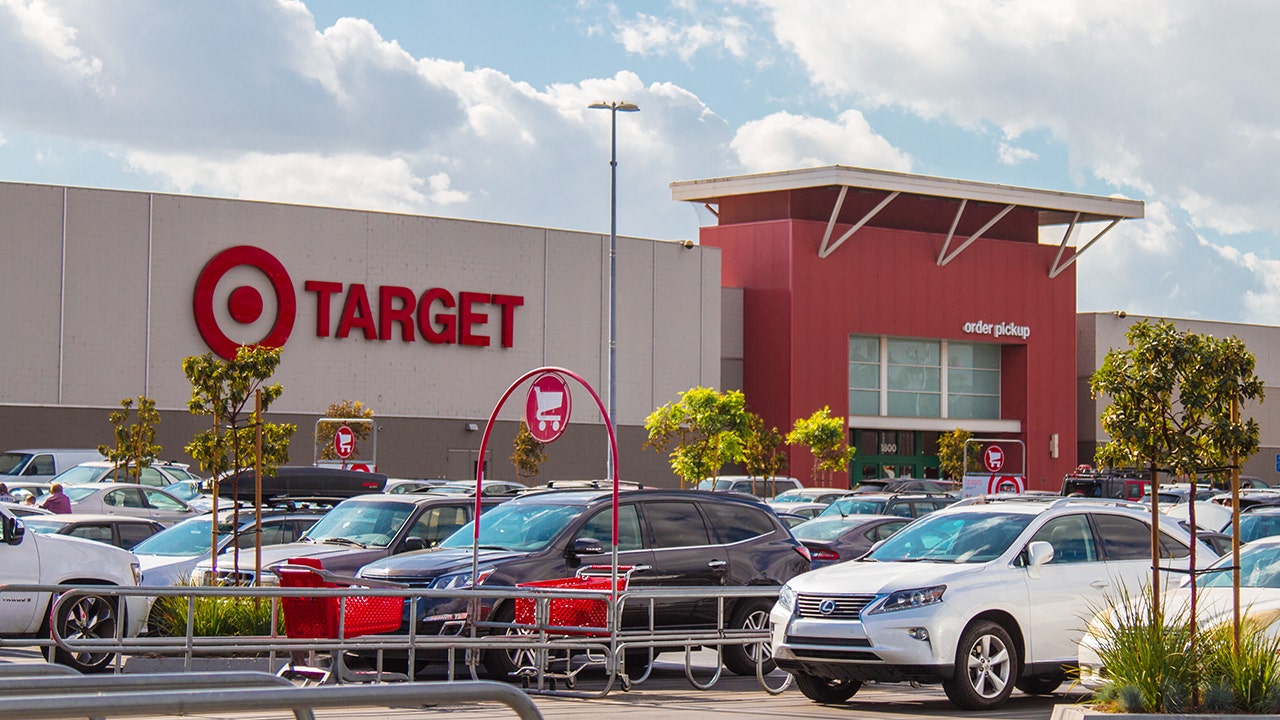

/origin-imgresizer.eurosport.com/2024/05/20/3971508-80624873-2560-1440.jpg)
